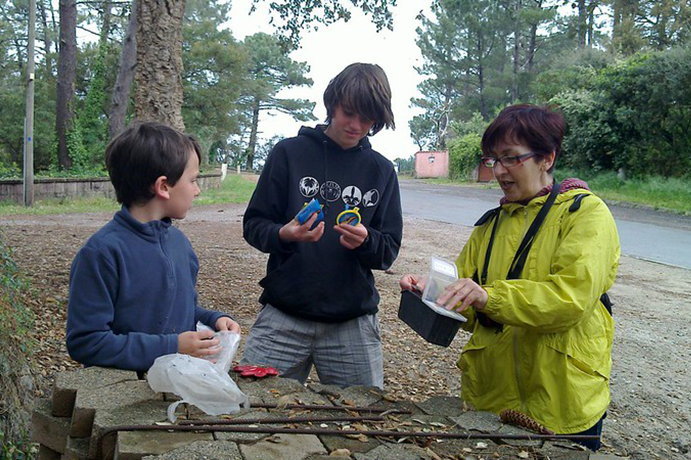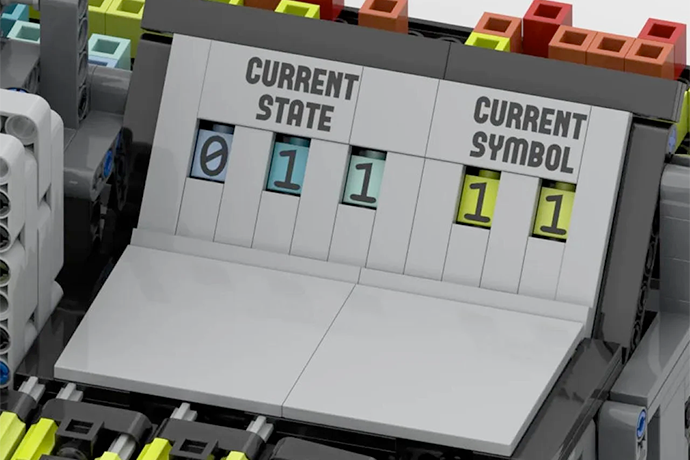1.13.1 🧶 Knitting, Coding Problems, Pigeons on Stairs, Knapsack Problem

Welcome to my Wednesday email. I have another summer project this week. You might not think of knitting as a STEAM project but it is very much about science, technology, math, and art. Only the E for engineering is missing. I also have links from beginner to expert coding problems you might use to practice your coding skills. And a general interest article about a complex computer science problem called the Knapsack Problem. Plus a recreational math problem about pigeons and stairs. Scroll down to get started.
Summer Projects: Knitting
You might think knitting isn’t about STEM or STEAM. My partner is an amazing knitter. She has dragged me to knitting stores and sheep, alpaca, and goat farms. I've also learned about plant color dying. Knitting is very much about STEM and STEAM. Animals and plant based dyes definitely are Science: biology and chemistry. Knitting needles and related tools are definitely T for technologies. Same for the process of knitting. Knitting also uses Math. You measure the human body and something called gauge, the number of stitches and rows in a certain area. The A in STEAM also is obvious: some knitting patterns are very creative and artistic. The only letter missing with knitting is E for engineering. Sadly you can’t knit a bridge or a building.
The most interesting thing about knitting and STEM is its impact on humans who knit. Knitting releases serotonin, a chemical that helps reduce anxiety.
Once you start knitting, there’s people in stores and online who can help you solve problems. The question is where to start online if you want to learn how to knit?
My knitting partner recommends the VeryPink YouTube videos as great for people who want to learn to knit. She says to start by knitting a scarf. And that it is very easy to be overwhelmed so focus on the basics. Which means learning how to cast on and knit first before bothering to learn a purl stitch and other techniques. In the RJ Knits and Erica Arndt videos below, for example, they demonstrate a basic cast on technique to get started. Once you feel comfortable knitting, however, there's a better cast on technique called a Long-Tail Cast-On Slingshot method to start.
One last point to share: I’ve seen guys knitting on the New York City subway. While many women love to knit, many guys find it interesting too. The RJ Knits link below is led by a guy and more slower paced than the Erica Arndt video, which is focused on creating something specific, a scarf.
VeryPink Knits
https://verypink.com/
https://www.youtube.com/@verypinkknits
https://verypink.com/category/techniques/basics/
https://www.youtube.com/user/verypinkknits
How to Knit a Scarf for Beginners (Erica Arndt)
https://www.youtube.com/watch?v=Oo4GFc6jH0I
How to Knit: Easy for Beginners (RJ Knits)
https://www.youtube.com/watch?v=p_R1UDsNOMk
Checking Gauge
https://www.youtube.com/watch?v=Omek0d4xWJs
Knitting Help: Steam Blocking
https://www.youtube.com/watch?v=rIpXoT5vg1I
Long-Tail Cast-On Slingshot Method
https://www.purlsoho.com/create/long-tail-cast-on/
https://verypink.com/2011/07/13/long-tail-cast-on-slingshot-method/
Coding Problems
There are several different ways to learn programming. In person, of course, at a traditional school or group event. Online, there’s schools and also websites with programming problems from beginner to expert. Some of these sites let you interact with mentors as you work through problems. The most difficult kind of these websites is code golf. Golf tries to use as few strokes as possible while code golf uses as little code as possible to solve a problem.
For beginners, sites like Codewars and daily.dev might be good places to start. The primary value is an opportunity to practice and learn programming in one or more languages. Plus the possibility of being mentored, if the site includes an online community. The primary value is working from simple problems like adding numbers to more complicated programming problems.
Fun Coding Problems: From Easy to Hard
https://daily.dev/blog/fun-coding-problems-from-easy-to-hard
Simple Programming Problems
https://adriann.github.io/programming_problems.html
Codewars
https://www.codewars.com/
Code Golf
https://kidscodecs.com/code-golf/
The Knapsack Problem
'Imagine you’re a thief robbing a museum exhibit of tantalizing jewelry, geodes and rare gems. You're new at this, so you only brought a single backpack. Your goal should be to get away with the most valuable objects without overloading your bag until it breaks or becomes too heavy to carry. How do you choose among the objects to maximize your loot? You could list all the artifacts and their weights to work out the answer by hand. But the more objects there are, the more taxing this calculation becomes for a person—or a computer.
This fictional dilemma, the “knapsack problem,” belongs to a class of mathematical problems famous for pushing the limits of computing. And the knapsack problem is more than a thought experiment. “A lot of problems we face in life, be it business, finance, including logistics, container ship loading, aircraft loading — these are all knapsack problems,” says Carsten Murawski, professor at the University of Melbourne in Australia. “From a practical perspective, the knapsack problem is ubiquitous in everyday life.”'
How the Mathematical Conundrum Called the ‘Knapsack Problem’ Is All Around Us
https://www.smithsonianmag.com/science-nature/why-knapsack-problem-all-around-us-180974333/
The Knapsack Problem
https://www.youtube.com/watch?v=gA0I_tFBCTE
Pigeons on the Stairs Puzzle
This problem comes from one of the oldest collections of mathematical problems, Problems to Sharpen the Young. Some scholars say the author might have been Alcuin, who lived from about 732 to 804 AD. Alcuin lived near the city of York, in England, and became a teacher and then head of the Cathedral School at York which still exists, as St. Peter’s School, York.
Here is the math problem to solve:
A staircase has 100 steps. On the first step stands a pigeon; on the second, two pigeons; on the third, three; on the fourth, four; on the fifth, five; and so on, on every step up to the hundredth where there are 100 pigeons on the hundredth step. How many pigeons are there altogether?
If 100 steps is too hard, answer the problem for 20 stairs, or 10 stairs. And if pigeons gross you out, feel free to substitute kittens, hamsters, or whatever makes you happy! The article link has a detailed description of how to solve this puzzle.
Pigeons on the Stairs
https://kidscodecs.com/pigeons-on-the-stairs/
This Week
Our Sunday issue this week has fun often offbeat links and asks the eternal question: were Fred and Wilma Flintstone Neanderthals? There's also actual Neanderthal news about their language, clever Amazon workers who found a way to get rare paid time off, dream analysis, a hydrogen fuel cell train, and more.







Member discussion